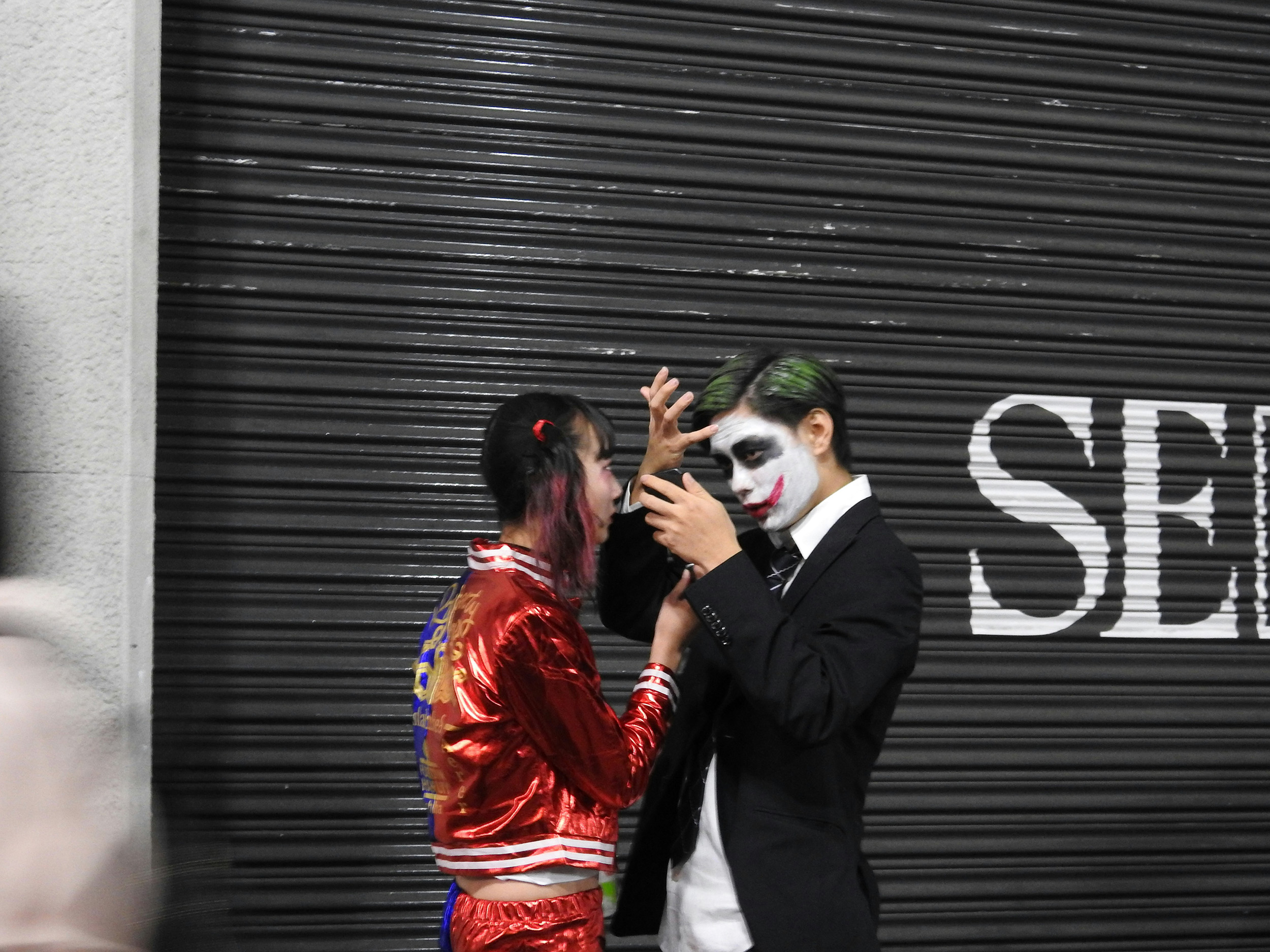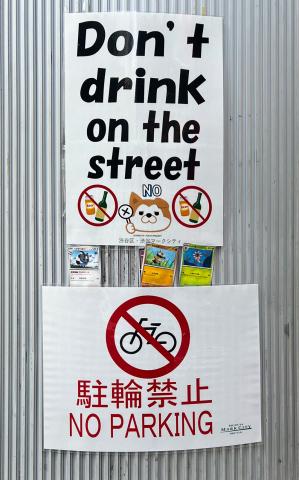Issue:
November 2024
Thirsty tourists and locals have prompted two Tokyo wards to ban street drinking

It is Halloween in Shibuya and Shinjuku, and all is … quiet. At least that is what the Tokyo wards’ authorities were hoping when they announced measures to curb outdoor drinking, and not just at the end of October.
Ken Hasebe, the mayor of Shibuya ward, and his counterpart in Shinjuku ward, Kenichi Yoshizumi, recently visited the Foreign Correspondents’ Club of Japan to explain their policies on public drinking and impact of overtourism, which they blame for extra trash and disorderly behavior.
“We’re urging people not to drink or make noise on the streets of Shibuya and Shinjuku and to follow the rules,” Hasebe said, noting how the number of revellers in Shibuya fell from an estimated 60,000 to just 15,000 after the Halloween ban was introduced in his ward last year. “Accidents and fights occur when people gather on the street and drink."
Shibuya’s extended yearlong ban went into effect on October 1, while Shinjuku’s restrictions cover Halloween and New Year’s. The bans do not come with legal penalties, but police will confiscate alcohol or force revellers to empty the contents of their bottles and cans. The wards will also ask local shops not to sell alcohol on holidays.
When Shibuya launched its Halloween drinking ban last year, an estimated 3,000 people simply went to Shinjuku instead, prompting the ward to take its own measures. “We thought that if we didn’t act then people would say, ‘Okay, it's not allowed in Shibuya, but we can do it in Shinjuku,’” Yoshizumi said.
Yoshizumi, who grew up in Shinjuku and became mayor in 2014, oversaw a public bicycle rental program and the decision to make Godzilla the ward’s tourism “ambassador”.
After their appearance at the FCCJ the mayors met the governor of Tokyo, Yuriko Koike, and other ward leaders to discuss possible joint efforts, having worked together previously on issues such as fraudulent touts and price gouging.
Could Tokyo see a citywide ban on public drinking?

That’s unlikely to happen any time soon, but many officials remember earlier drunk and disorderly conduct in Shibuya and the tragic Halloween night in Seoul’s Itaewon District in 2022, when 159 people died in a crush.
Both mayors used the word overtourism to describe what their wards face, as well as the need for a sponsor to oversee post-party cleanups.
“Shibuya and Shinjuku are two of Japan’s most popular destinations, attracting many tourists from Japan and abroad,” Hasebe said. “Halloween is when overtourism is the most apparent.”
Hasebe, making his second visit to the FCCJ in a year, worked for the Hakuhodo advertising agency before founding the NPO Green Bird, which picks up garbage in Tokyo neighborhoods. In 2003, he was elected to the Shibuya Ward assembly and became mayor in 2015, the year the ward introduced same-sex partnership certificates.
Shibuya is home to almost 12,000 foreign residents, while Shinjuku has one of Japan’s highest concentrations of foreigners, with 43,000 - approximately 13% of its population. Record levels of inbound travel to Japan – with 3.29 million visitors in July alone – has added to pressure on the wards.
Anca Todica, a professor of business at Lakeland University Japan, said overtourism had become an issue in Japan after visitor numbers quickly rebounded following the end of the Covid-19 pandemic.
“When it comes to Shibuya and Shinjuku, it’s literally the number of people,” she said. “They weren’t imagining so many.”
In January, the then prime minister, Fumio Kishida, outlined a tourism target of 60 million visitors by 2030, and an estimated ¥15 trillion in revenues. About 35 million visitors are expected this year, along with ¥8 billion in spending.
Japan’s economy desperately needed a boost, particularly the hospitality sector, which had suffered losses and bankruptcies during the pandemic. The tourism surge has been helped by the weak yen, which fell to a 38-year low against dollar in early July.
“During the pandemic, Japan became very popular on social media,” Todica said. “We were expecting 1.5 million people to come to Japan in January, but actually in February there were over 3 million.”
Kyoto, with over 40 million visitors annually, has also decried overtourism and taken measures to reduce overcrowding. However, visitors account for 10% of Kyoto’s economic activity, while overall inbound spending in Japan in the first quarter of the current fiscal year reached ¥6.8 trillion, up 400% over the last decade, according to the Mainichi Shimbun. On average, a visitor to Japan spends nearly ¥240,000, nearly a third of which goes on shopping.
Overtourism is both a product of Japan’s success and poor planning. In response, some sightseeing spots are implementing measures such as dual pricing for locals and visitors, lodging taxes, restrictions on visitor access, paid-for garbage disposal, and pre-booking for particular popular destinations.
Local people have a part to play in addressing overtourism, Hasebe said. “We need to educate Japanese as well, because it’s not entirely the fault of foreigners, as one-third of the people involved (in street drinking) are Japanese."
“It could be that foreigners look at Japanese and think it’s okay to behave in that way. As they say, ‘When in Rome ….’”
Dan Sloan is president of the FCCJ. He joined the club in 1994 and previously served as president in 2004 and 2005-06. He reported for Knight-Ridder and Reuters for nearly two decades.

